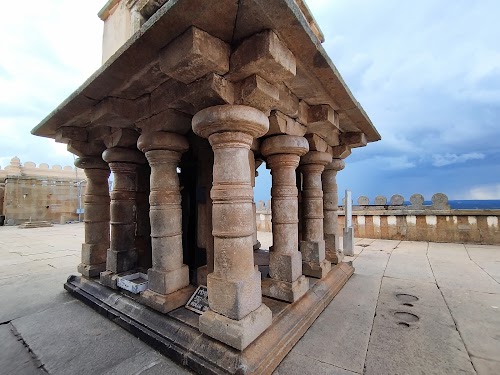
Shravanabelagola Jain Temple
Shravanabelagola, India
- Climb Vindhyagiri hill to see Gommateshwara statue.
- Enjoy panoramic views from hilltops.
- Explore Jain temples on Chandragiri hill.
- Study ancient Jain inscriptions.
- Visit the museum showcasing Jain artifacts.
- Witness the Mahamastakabhisheka ceremony (every 12 years).
Known for:
Description:
Shravanabelagola, meaning 'white pond of the Shravana,' is a renowned Jain pilgrimage site in Karnataka, India. The main attraction is the colossal monolithic statue of Lord Bahubali (Gommateshwara), standing at 57 feet atop Vindhyagiri Hill. Pilgrims and tourists ascend the hill via a well-maintained path with hundreds of steps. The panoramic views from the summit are breathtaking, offering vistas of the surrounding landscape and the smaller Chandragiri Hill, which houses numerous Jain temples and inscriptions. The Mahamastakabhisheka, a spectacular anointing ceremony held every 12 years, draws devotees from across the globe. Shravanabelagola is a serene and spiritually enriching destination, showcasing Jain art, architecture, and philosophy.
History:
Shravanabelagola's history dates back to the 3rd century BC, with inscriptions suggesting Jain presence in the region. The Gommateshwara statue was commissioned by Chavundaraya, a Ganga dynasty minister and commander, and erected around 981 AD. The statue represents Bahubali, a Jain saint who renounced worldly possessions to attain enlightenment. Over the centuries, Shravanabelagola flourished as a significant Jain center, attracting scholars, monks, and devotees. The Ganga, Hoysala, and Vijayanagara empires contributed to the development of the site. The inscriptions found here provide valuable insights into the history of Jainism and the dynasties that ruled the region. Today, Shravanabelagola remains a vital pilgrimage destination, preserving its rich heritage and spiritual significance.